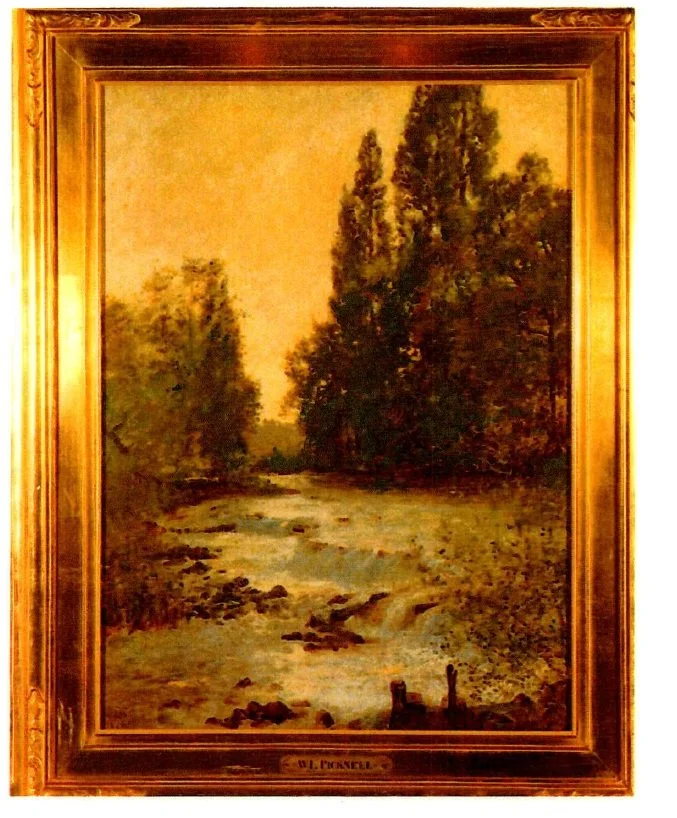Boston bred landscape painter William Lamb Picknell is represented in the Union Club's collection by a refreshing scene of a swollen river spilling through a wooded landscape Picknell sought training abroad, initially under the American George Innis in Rome in 1873, but shifted the following year to study under Jean-Leon Gèrôme at the Ecole des Beaux Arts in Paris in 1874 who favored a type of academic painting with little atmosphere, jewel like color and a slick porcelain finish. He then rounded off his formal training with the Anglo- American from Philadelphia, Robert Wyley, at Pont Aven in Brittany, a spot Wyley had colonized 20 years before Gaugin made it famous. Having trained with Gèrôme himself Wyley well understood the shackles of the academic manner and was able to help Picknell develop a style of painting that gave a nod to Gèrôme without sacrificing the expressive brushwork and surface effects that were most prized in contemporary painting. Picknell eventually emerged with a technique that combined a rather tightly knit network of strokes that relied both upon brush and looser textures achieved with a palette knife. Wiley's tutelage was invaluable to Picknell, who was temperamentally inclined to paint in a tightly constructed, almost literal manner
Given the international nature of his artistic education, Picknell clearly felt completely at home in Europe, and chose to live and work there for most of his life as an expatriate, where he doubtless understood he would have a sympathetic clientele.
After completing his training Picknell lived at various artists’ colonies throughout France first in Brittany at Pont Evan from 1876 to 1880 and Concarneau, and later in Gretz, Moret, and Antibes. His work was well received both in France and at home in the United States and he exhibited it regularly at the Paris salons, the National Academy of Design, and at the Pennsylvania Academy of Fine Arts. Four of his paintings were exhibited at the World's Columbian Exposition in 1893 in Chicago, where John Kavanagh’s Washer Woman was also displayed. Picknell returned to his native Massachusetts in 1882, established a studio in New York, and for the greater part of the 1880s painted along the rocky coasts of Annisquam, and traveled widely from Florida to California in search of landscape subjects. Curiously, while he was disassociated from the American style of landscape painting in certain ways, Picknell nonetheless acted upon an intense desire to record his native landscape. He roamed all over America, painting at most majestic as well as its very ordinary geography. The impulse to undertake this demanding travel schedule when his health was so chronically fragile demonstrates the importance that painting America held for him. Picknell returned to France in the early 1890s where he maintained a Paris studio but lived and worked primarily in Antibes in the south of France until shortly before his death, when he returned to the United States. Although he died at 43, Picknell had achieved distinction as a significant talent, and was commemorated by Augustus Saint-Gaudens on a portrait medallion.
Picknell’s landscape in the Union Club was produced during the artist’s period of study under Gèrôme. Interestingly, while the scene was painted in France, and probably records a subject Picknell discovered in the forest of Fontainebleau near Barbizon, it has a cranky, untamed character that resembles an American landscape more than a European one. Among other things, Picknell chose a vertical format for the subject rather than a horizontal one, which was more typical of American than European landscape paintings of the time.
